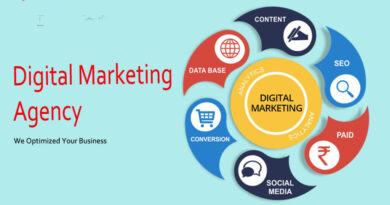How to Optimize your Website to Convert Better
If you’re looking for ways to increase your website’s conversion rate, you’ve come to the right place. With the constantly changing digital landscape, it can be tough for businesses to keep track of all of the latest strategies and technologies when optimizing their online presence. But don’t worry! In this blog post we’ll cover 8 essential tips that will help you take advantage of all digital marketing has to offer and optimize your website for better conversion rates. By following these simple steps by SEOBlog Local SEO Services, you’ll be well on your way towards giving customers an amazing experience while they are visiting your site, which increases their likelihood of making a purchase or signing up for one of your services. So if you want to maximize ROI from digital initiatives, let’s get started!
1. Use high-quality visuals: Using visuals such as images, videos, and infographics can be a great way to grab visitors’ attention and enhance the overall user experience. High-quality visuals have been proven to increase engagement and boost conversions. When creating or selecting visuals for your website, make sure they are relevant to your brand and message. Quality is key, so always use the highest resolution possible when it comes to images. Additionally, Dallas Local SEO Services shared to consider the placement of these visuals on your website; you should put them in areas that will most likely draw users’ attention.
2. Make navigation easy and intuitive: Another essential factor for successful website optimization is making sure users can find what they are looking for quickly and easily. This means providing clear, concise navigation options that are consistent throughout all pages. Consider giving users the ability to search for what they’re looking for, as well as providing a drop-down menu that allows them to select specific categories or products. Additionally, make sure key calls-to-action (CTAs) are prominently displayed and easy to find on each page.
3. Improve website speed: Website speed is an incredibly important factor in your website’s optimization efforts. If your website takes too long to load, users will most likely abandon it before they even get a chance to explore what you have to offer. Optimizing the loading time of your site can be difficult but there are some steps you can take such as optimizing images, minifying HTML, CSS, and JavaScript code, caching static content, and using a content delivery network.
4. Write compelling website copy: Writing concise and engaging website copy is essential for successful optimization. Your website should not only contain basic product descriptions and information about your company, but also effective calls-to-action that encourage users to take action such as buying a product or signing up for a newsletter. Make sure you use strong headline text that clearly communicates your message, as well as short and powerful paragraphs that are easy to read.
5. Craft an effective landing page: A great way to maximize conversions on your website is by creating an effective landing page. This page should be designed with the user in mind; it must clearly explain what the user should do, why they should do it, and how to do it. Make sure the page is highly visual with compelling visuals and concise copy that communicates the key message. Additionally, make sure your landing page contains a prominent CTA button that stands out from the rest of the content.
6. Optimize for SEO: SEO optimization is critical in ensuring users can find your website in search engine results pages (SERPs). This requires a combination of on-page optimization such as using relevant keywords throughout your website’s content and metadata, as well as off-page activities such as building high-quality links to your site from reputable sources. SEO Agency Dallas added to make sure you use targeted keywords that accurately describe what you have to offer; this will help ensure your website ranks higher in SERPs.
7. Utilize A/B testing: A/B testing is a great way to ensure optimization efforts are successful. You can use this technique to test different versions of webpages, emails, and other digital assets to determine which ones perform better with users. This allows you to refine the message and design of your website for maximum conversions.
8. Analyze user data: Finally, analyzing user data is essential for understanding how users interact with your website and what changes need to be made for optimal performance. Tools such as Google Analytics allow you to track important metrics including bounce rate, average time on page, number of pages visited per session, and more. By thoroughly analyzing this data, you can identify areas for improvement and take the appropriate steps to ensure your website is optimized for conversions.
Conclusion
Overall, optimizing your website for maximum conversions requires a combination of design, content, and technology factors. By following these 8 tips, you will be well on your way to creating an effective website that drives more users to take action. The key is to keep testing and making improvements as necessary so that visitors always have a positive experience when interacting with your site. With the right optimization strategies in place, you can drive higher conversions from your existing traffic and ultimately increase your business’s bottom line.




